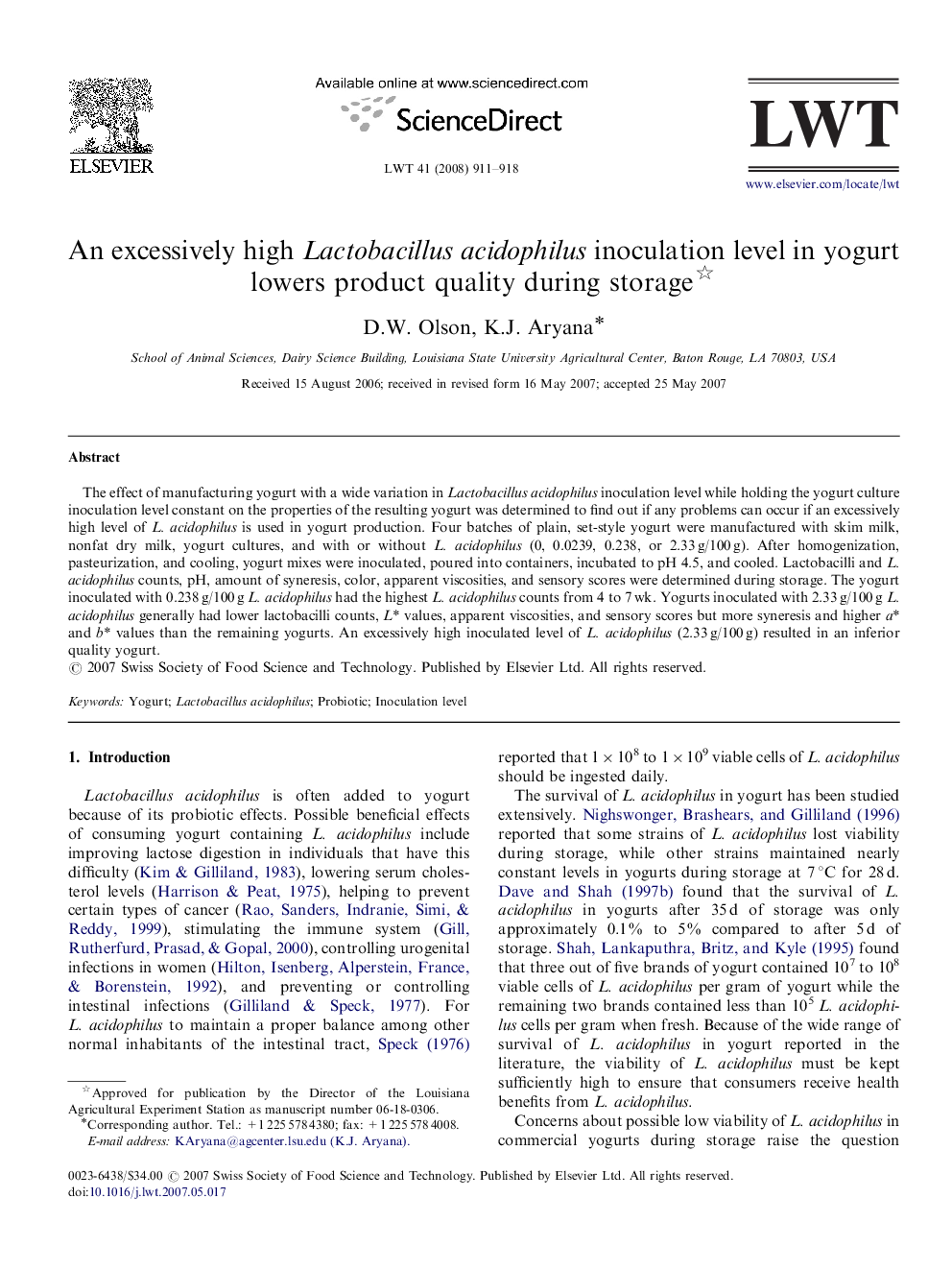| Article ID | Journal | Published Year | Pages | File Type |
|---|---|---|---|---|
| 4564276 | LWT - Food Science and Technology | 2008 | 8 Pages |
The effect of manufacturing yogurt with a wide variation in Lactobacillus acidophilus inoculation level while holding the yogurt culture inoculation level constant on the properties of the resulting yogurt was determined to find out if any problems can occur if an excessively high level of L. acidophilus is used in yogurt production. Four batches of plain, set-style yogurt were manufactured with skim milk, nonfat dry milk, yogurt cultures, and with or without L. acidophilus (0, 0.0239, 0.238, or 2.33 g/100 g). After homogenization, pasteurization, and cooling, yogurt mixes were inoculated, poured into containers, incubated to pH 4.5, and cooled. Lactobacilli and L. acidophilus counts, pH, amount of syneresis, color, apparent viscosities, and sensory scores were determined during storage. The yogurt inoculated with 0.238 g/100 g L. acidophilus had the highest L. acidophilus counts from 4 to 7 wk. Yogurts inoculated with 2.33 g/100 g L. acidophilus generally had lower lactobacilli counts, L* values, apparent viscosities, and sensory scores but more syneresis and higher a* and b* values than the remaining yogurts. An excessively high inoculated level of L. acidophilus (2.33 g/100 g) resulted in an inferior quality yogurt.
